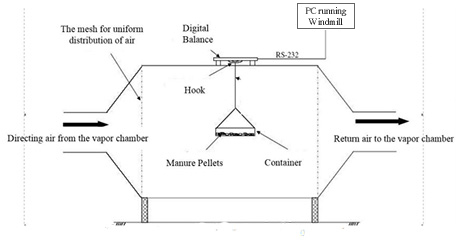Logging moisture in manure pellets
Cattle manure has always been a valuable source of nutrients for crops. It contains nitrogen, phosphorus and potassium and improves the chemical and physical properties of the soil. Its drawback though is that its bulk means it can be costly to transport. Also, heaps of manure have a risk of contaminating the environment with run-off to rivers. Pelleting is one of the ways to solve these problems and Iranian researchers have been investigating the physical properties of the pellets for efficient storage and transport, and how they are affected by moisture.
The amount of moisture in the pellets changes their durability and density. Scientists Mansoureh Pourjafar1 and Javad Rezaeifar conducted moisture absorption tests in an air-tight chamber (1.8 m x 0.9 m x 0.9 m). They supplied conditioned air using a temperature-humidity conditioner with temperature-relative humidity combinations of 45 oC and 70% and 80% humidity.

To conduct a test, the researchers placed 100 g of pellets in the sample container and hung it onto the weigh-below hook of a digital balance (accuracy of 0.01 g). They exposed the sample to the conditioned air for a maximum of 48 hours. After this time the pellets would either not absorb any more moisture or would have almost disintegrated. They used Windmill software to continually record the weight of the sample every 30 minute throughout the duration of exposure to the conditioned air. The software ran on a PC and connected to the balance over an RS232 interface.
Further Reading
Some Physical Characteristics of Pellets from Cattle Manure, Mansoureh Pourjafar and Javad Rezaeifar, Bioscience Research 2019 16(2):898-908.
